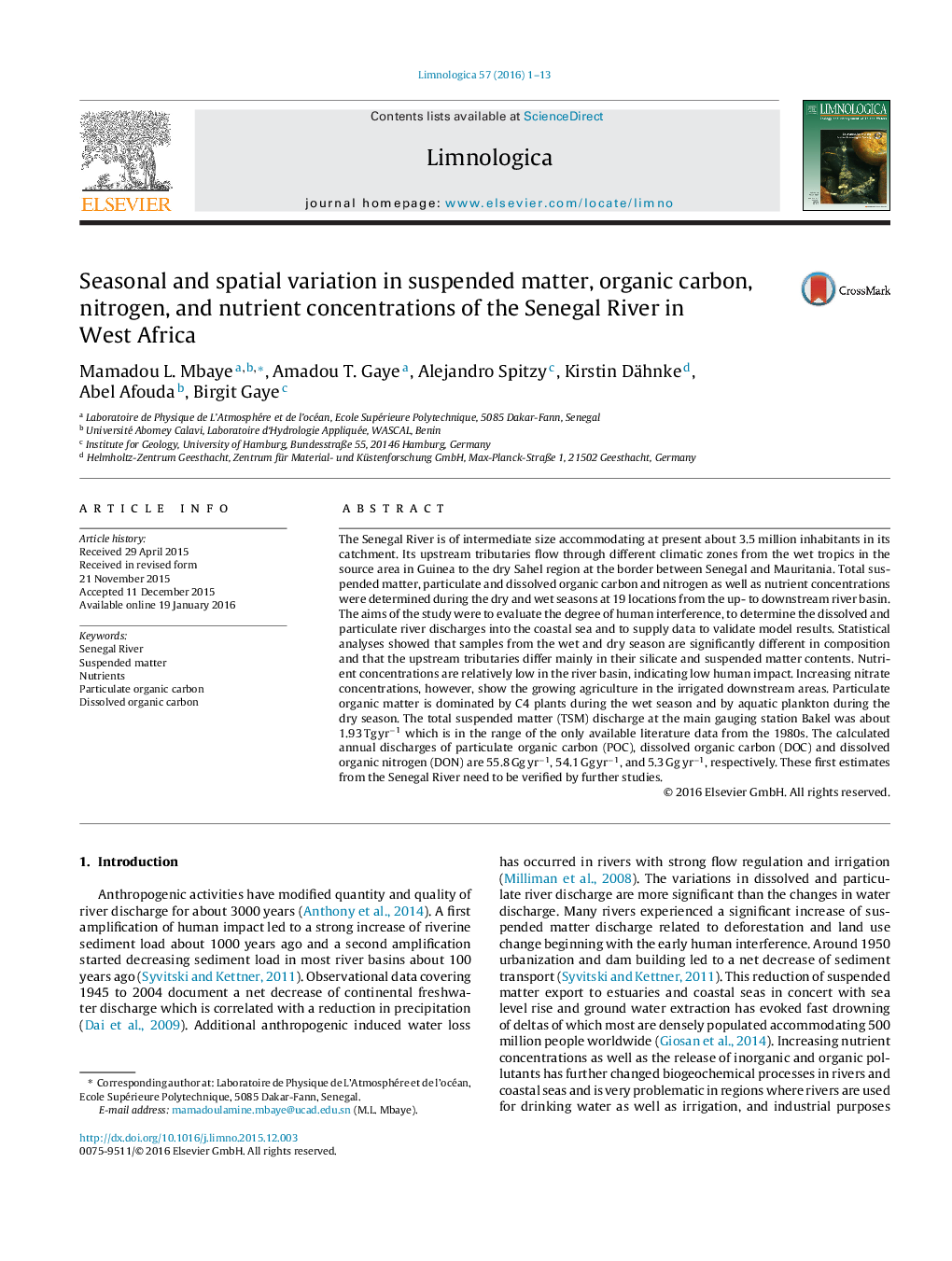| کد مقاله | کد نشریه | سال انتشار | مقاله انگلیسی | نسخه تمام متن |
|---|---|---|---|---|
| 4400323 | 1618565 | 2016 | 13 صفحه PDF | دانلود رایگان |
The Senegal River is of intermediate size accommodating at present about 3.5 million inhabitants in its catchment. Its upstream tributaries flow through different climatic zones from the wet tropics in the source area in Guinea to the dry Sahel region at the border between Senegal and Mauritania. Total suspended matter, particulate and dissolved organic carbon and nitrogen as well as nutrient concentrations were determined during the dry and wet seasons at 19 locations from the up- to downstream river basin. The aims of the study were to evaluate the degree of human interference, to determine the dissolved and particulate river discharges into the coastal sea and to supply data to validate model results. Statistical analyses showed that samples from the wet and dry season are significantly different in composition and that the upstream tributaries differ mainly in their silicate and suspended matter contents. Nutrient concentrations are relatively low in the river basin, indicating low human impact. Increasing nitrate concentrations, however, show the growing agriculture in the irrigated downstream areas. Particulate organic matter is dominated by C4 plants during the wet season and by aquatic plankton during the dry season. The total suspended matter (TSM) discharge at the main gauging station Bakel was about 1.93 Tg yr−1 which is in the range of the only available literature data from the 1980s. The calculated annual discharges of particulate organic carbon (POC), dissolved organic carbon (DOC) and dissolved organic nitrogen (DON) are 55.8 Gg yr−1, 54.1 Gg yr−1, and 5.3 Gg yr−1, respectively. These first estimates from the Senegal River need to be verified by further studies.
Journal: Limnologica - Ecology and Management of Inland Waters - Volume 57, March 2016, Pages 1–13
